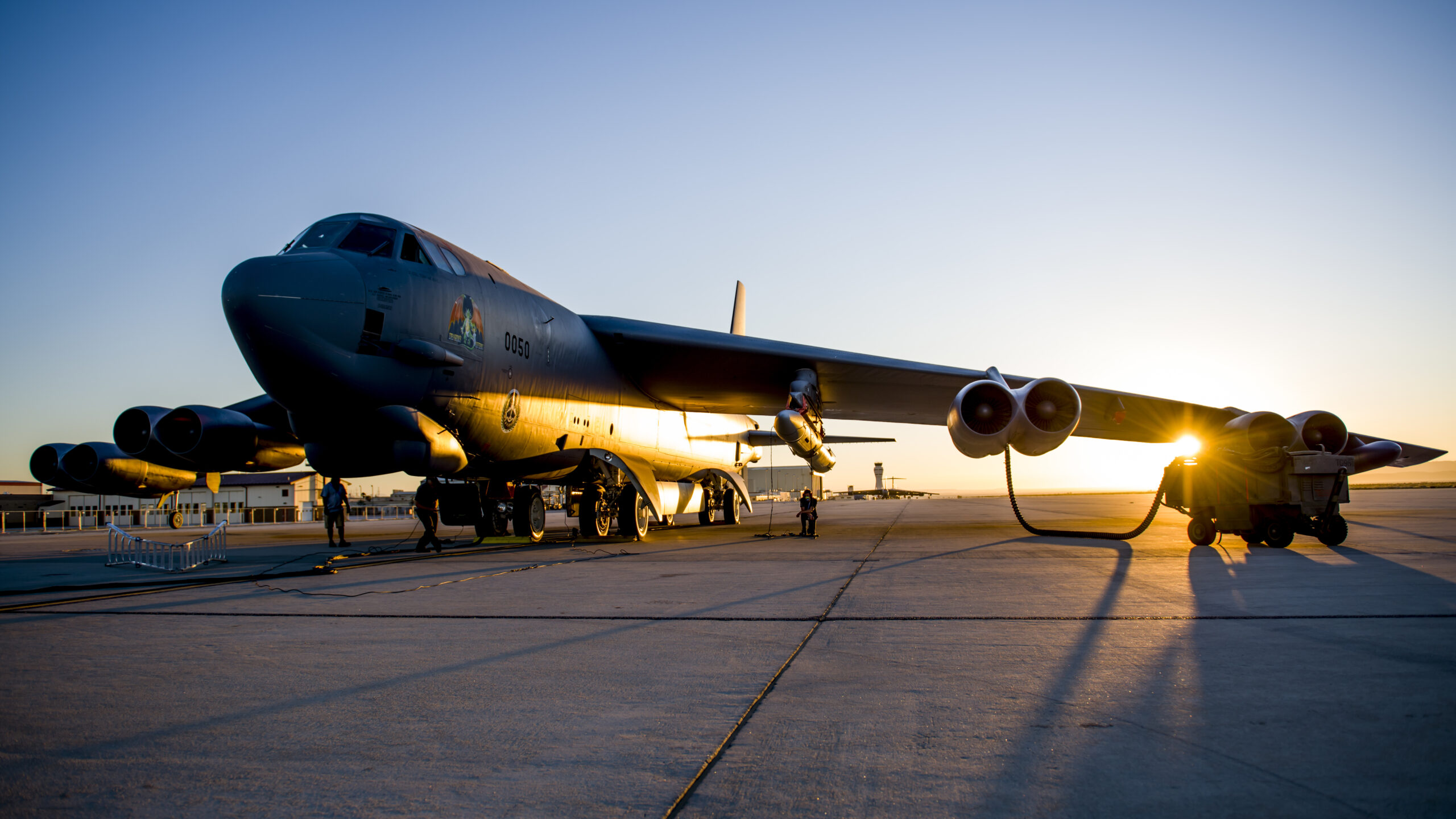
A B-52H equipped with an AGM-183A Air-launched Rapid Response Weapon undergoes pre-flight procedures at Edwards Air Force Base, California, Aug. 8, 2020. (Air Force/Giancarlo Casem)
WASHINGTON: The Pentagon’s top leaders, including Defense Secretary Lloyd Austin, gathered virtually with more than a dozen defense CEOs on Thursday to discuss how the department can speed up the development of hypersonic weapons and close the gap between US and China — and how critical a stable DoD budget is to those efforts.
For defense executives, the meeting signaled that the Pentagon, and Austin more specifically, may be getting more serious about working with industry to move faster on one of the department’s biggest technology priorities, four sources familiar with the discussions told Breaking Defense.
The discussion, originally scheduled for two hours, was shortened to about half that time accommodate the schedules of Austin, Deputy Defense Secretary Kathleen Hicks and the department’s chief technology officer Heidi Shyu.
But it was not lost on industry participants that, on a day when US officials had revealed new information about Russian plans to invade Ukraine and the department had detailed the death of a top figure in the Islamic State terrorist group, Pentagon leadership also made time to speak with defense companies about hypersonic tech.
“I think If you look around at everything going on in the world today from a defense perspective, the fact that Secretary Austin made this a priority… I think that by itself speaks to the gravity and urgency around this particular technology area,” said one industry source with knowledge of the meeting.
Austin joined the call near the end of the hour-long discussion, sources said, and “noted the need for persistent dialogue in order to meet the department’s current and future capabilities requirements for defensive and offensive capabilities,” according to the Defense Department’s readout.
Sources told Breaking Defense that Pentagon leaders spent much of the meeting soliciting feedback from industry on how it could speed up the development of both offensive and defensive hypersonic technologies. Hicks chaired the meeting and offered opening remarks, while Shyu moderated a discussion among the participants.
One “overwhelming” area of concern shared by companies was the impact of budgetary disruption, including an ongoing continuing resolution for fiscal 2022 that is effectively reducing the department’s investment in certain hypersonic programs, one source told Breaking Defense. Executives expressed that long-term budgetary certainty was critical to keep hypersonic development and testing on track and to signal the department’s commitment to the technology.
Another major source of discussion, three sources told Breaking Defense, was the lack of US infrastructure for hypersonic testing, such as wind tunnels and test ranges. In a recent report, the Pentagon’s independent weapons tester found the US military does not have enough space on its missile ranges to adequately test hypersonic missiles, and it needs to invest in simulation tools for hypersonic missile defense, according to a Feb. 3 report by Bloomberg.
The department’s readout also noted these concerns, stating that the “participants identified a need to expand access to modeling capabilities and testing facilities in order to adopt a ‘test often, fail fast, and learn’ approach which will accelerate the fielding of hypersonic and counter-hypersonic systems.” (The meeting came the same day the Defense Department’s Inspector General published a report on hypersonic infrastructure, but it’s restricted from public view as “controlled unclassified information” — a controversial designation that recently drew the ire of a powerful senator.)
RELATED: Warren slams Pentagon for restricting unclassified info on weapons’ flaws
At the end of the discussion, officials expressed interest in holding further meetings in a classified environment in the future, multiple sources said.
More than a dozen companies participated in the meeting, from large defense firms that have largely served as the prime contractors for the US military’s flagship hypersonic development programs to some of the mid- and lower-tier companies that populate the supply chain.
The list of companies invited to the meeting included Raytheon Technologies, Lockheed Martin, Northrop Grumman, Boeing, Aerojet Rocketdyne, Leidos, L3Harris, General Electric, and BAE Systems. It also included a single startup — Georgia-based Hermeus Corp., which hopes to develop a reusable hypersonic airplane that can fly autonomously.
Austin, a former Army four-star who led US Central Command, is more entrenched in the operational community than the world of science and technology — a background that sets him apart recent defense secretaries such as Mark Esper, a former Raytheon lobbyist, and Ashton Carter, who worked for years in defense acquisition.
However, there are signs that Austin hopes to deepen his relationship with industry. Austin and Hicks have engaged with more than 170 industry leaders since 2021, the department said in its readout of the meeting. And at Reagan Defense Forum in December, Austin acknowledged that the Pentagon must do more to help defense companies move cutting-edge technology through the valley of death.
“Let me offer a call to action to American businesses large and small, and to everyone in this room, including industry leaders,” he said during a speech at the event. “Join with us, work with us and help keep our country strong. Let’s meet this moment with all the innovation and ingenuity in America can muster.”
In a ‘world first,’ DARPA project demonstrates AI dogfighting in real jet
“The potential for machine learning in aviation, whether military or civil, is enormous,” said Air Force Col. James Valpiani. “And these fundamental questions of how do we do it, how do we do it safely, how do we train them, are the questions that we are trying to get after.”


























